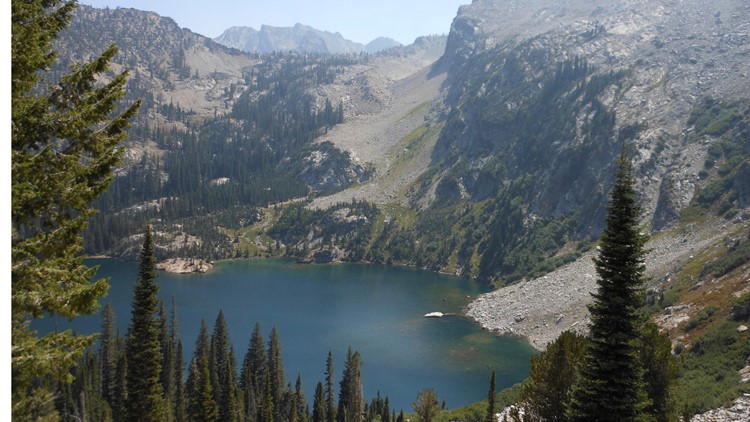KETCHUM, Idaho — U.S. officials have permanently closed four sheep and goat grazing allotments in and near central Idaho wilderness areas that are important habitat for wolves, bighorn sheep and other wildlife.
The 140 squares miles contained in the allotments are northeast of Ketchum in the Sawtooth National Forest and Salmon-Challis National Forest. The area is also a big draw for backcountry enthusiasts.
The Sagebrush Habitat Conservation Fund and Lava Lake Land & Livestock announced the agreement last week. The deal involved a negotiated payment from the conservation group to the sheep grower to end the grazing, but terms weren’t released. The U.S. Forest Service has signed off on the deal as well to permanently close the grazing allotments.
The conservation group buys out grazing allotments and would ultimately like to end grazing on public lands in the U.S. West. Lava lake Land & Livestock grows sheep in southern and central Idaho, specializing in grass-fed, wild-range lamb.
“The conclusion of domestic sheep grazing on these public lands will forever end potential conflicts between livestock grazing and native plants and animals,” the Sagebrush Habitat Conservation Fund and Lava Lake Land & Livestock said in a joint news release.
The deal is possible because of a provision in a 2015 wilderness bill.
President Barack Obama signed the Sawtooth National Recreation Area and Jerry Peak Wilderness Additions Act after Republican U.S. Rep. Mike Simpson of Idaho got ranchers, recreationists and environmental groups to back the plan.
The legislation created three wilderness areas that combined protect some 463 square miles (1,200 square kilometers). They are the Jim McClure-Jerry Peak Wilderness, the Cecil D. Andrus White Clouds Wilderness and the Hemingway-Boulders Wilderness.
Simpson had been working on wilderness designation for 15 years, but some groups upset with the delay pushed Obama to designate a much larger area a national monument. That possibility is widely believed to have led to the wilderness bill passing despite opposition, particularly in rural Custer County, where some of the wilderness areas are located.
As part of a compromise, the legislation allowed continued livestock grazing where it existed before the wilderness designation. However, a provision allows grazing allotments to be voluntarily and permanently retired.
“It was good to work together in the service of a goal we as ranchers and conservationists share with the Sagebrush Habitat Conservation Fund — the permanent protection of sensitive lands,” Brian Bean of Lava Lake Land & Livestock said in a statement.
Jon Marvel, vice-president of the Sagebrush Habitat Conservation Fund, said that Lava lake Land & Livestock is the only sheep grower he was aware of that had committed to non-lethal measures when protecting sheep from predators.
Marvel said there are more than a dozen other grazing allotments involving sheep and cattle in or near the wilderness areas his group would like to see retired, and has reached out to additional ranchers but has no takers so far.
Ranchers in the area can face a variety of pressures, including restrictions on the number of livestock allowed in certain areas due to environmental concerns. Some have faced lawsuits from environmental groups.
Besides being good wildlife habitat, the area also draws backcountry enthusiasts with some of the best scenic vistas and outdoor adventures in Idaho. Marvel noted some backcountry travelers, like wildlife, have also come in conflict with domestic grazing operations in the area. He noted in particular aggressive sheep guard dogs.
Voluntary retirement of grazing allotments is “a good solution to these kinds of conflicts,” Marvel said. “It can solve these problems without litigation.”



